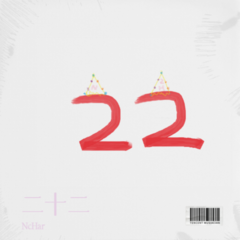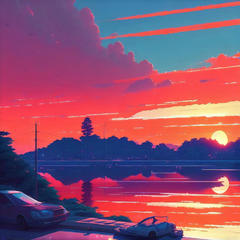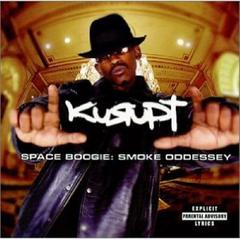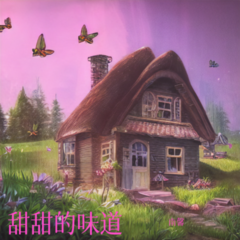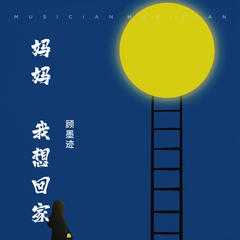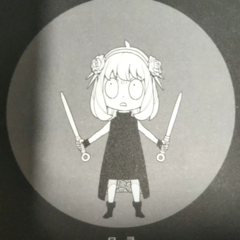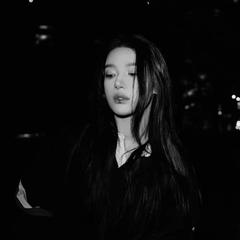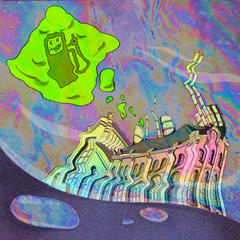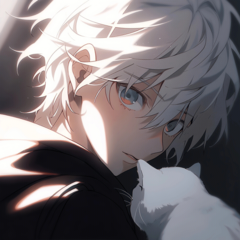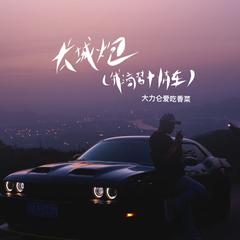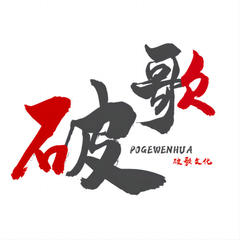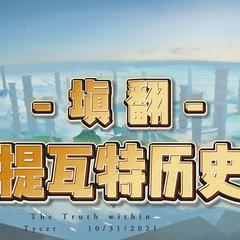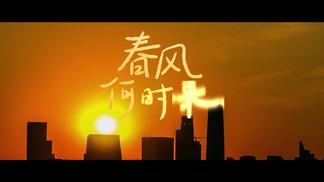Django Reinhardt
小简介 中国的乐迷习惯把强哥·莱恩哈特(Django Reinhardt)称为“三指琴魔”,相信他泉下有知的话,也会对这个中文名字开怀而笑,这笑容中肯定也会含着一种数说不清的自得,谁让爵士史上手指数目不多不少的琴师无数,却偏偏敌不过他一个残疾乐手呢! 不知道如果没有18岁那年的蓬车失火,莱恩哈特会不会在班卓琴或小提琴上同样干出惊天动地的事来,但设想的结果是很有可能他也会成为一个出色的乐手,但只能和同时代的许多优秀乐手一起排排坐,而绝对达不到现在这种宗师级的地位。问题看上去似乎只是大火烧伤了他左手的小指和无名指那么简单,但对于一个琴师来讲,这无疑就是上帝对你进行的最严厉的惩罚,不过,莱恩哈特这个比利时出生的吉普塞(Gypsy)人也正是在这关键时刻显示了他个性中最为优秀的一面,他只是把这次灾难看成上帝和他开的小小玩笑,而目的是要让他新生。 于是他踩着摇摆乐(Swing)的尾巴开始了行进的起点,而从1934年创立到1948年解散的“法国热乐五重奏”(Quintet of the Hot Club of France)则就是他事业颠峰时刻的最好见证。是的,说起莱恩哈特怎么能不提起这个五重奏组合呢?!即使不提两位节奏吉它手(其中一位是他的弟弟)和贝司手,也一定要提起另一个小提琴大师史提芬·格拉佩利(Stephane Grappelli),正是他在精神上极度的自恋和对音乐绝不革新的“保守”精神,恰恰和喜欢自由、乐观、即兴、洒脱的莱恩哈特形成了一种爵士史上少见的美学对立,当吉它和小提琴声交错的响起时,总有一种感觉他们仿佛一个是浪人、一个是绅士,一个是小吃、一个是大餐,虽然听起来似乎非常的不合谐,但由于他们各自高超的演奏技艺,使得乐声在最完美的两级竟又不期而遇,直至形成一种虚脱后的合一,叫人感叹不已。 不过,人们还是难以掩饰对莱恩哈特的偏爱,听他的吉它演奏永远是那么感觉开朗,隐去了那些复杂的合弦与和声,许多单音节的音符在速度的串联中就如同阳光下蝴碟扑翅时的自然和欢愉,同时由于他从小在巴黎的名为“The Zone”的巴士底红灯区长大的原因,使他有机会接触到诸如“锡盘巷”(Tin Pan Alley)、“吉普赛”(Gypsy)、“马赛特”(Musette)等等许多民俗的音乐,这也使得他吉它的营造空间变得更为广阔,而这个空间里的风景也更为旖旎。 除了世人皆知的吉它速度之外,使莱恩哈特与许多只能玩技术的吉它手区别开来的一个重要因素就是他对音乐的革新精神,仅管有人会说他在二战后的那次美国之旅,曾经因为使用了插电的吉它就变得像不会弹琴一样了,甚至还有人认为他缺乏向新音乐过渡的勇气,以及在后期面对“波普”(Bebop)音乐时所表现的力不从心,但要知道任何革新都应该有所限度, 莱恩哈特至少清楚的知道他对音乐的理解能把革新做到最恰如其分的程度,所以他把他的生命中最好的东西都留在了上个世纪30到40年代的十几年间。 不得不提这张专辑里第一张CD的第十八首《Echoes Of France(LaMarseillaise)》,这是他在1946年1月31日的录音,而主题居然是用摇摆乐的节拍重新“改造”了法国国歌,真得非常赞叹他在二次世界大战刚停歇下来时,就立刻能用如此轻松随意的心态来面对多数人还在唏嘘还在茫然的未来,从那些琴弦上匆匆飞过的音符里你根本听不到战争带来的硝烟和创痛,却仿佛是一个花季少女在一场大雨停后走上街头,对着天空说:“雨啊你终于停了,我们终于又可以在阳光下跳舞了”。 这套双CD的专辑精选了莱恩哈特1935年至1948年黄金时段的最经典录音,这也正是“法国热乐五重奏”存世的时候,虽然五、六十年前的录音至今听来音色已经有一点混浊了,而缺少和声的层次也使得他的演奏显得过于苗条和纤细,但这丝毫阻止不了人们从他飞跃的指间听到轻灵的热情和开放,听到吉普赛人那种与生俱来的纯朴和自然,听着听着,听众甚至有了一种更残忍的怪问题——如果当时大火弄得他只剩下一个健全的手指,他是不是更能练成传说中的“一阳指”而让人无法超越?! 1953年,莱恩哈特因为中风在法国的枫丹白露去世,享年43岁,而在他死后的50年之后,他的琴声依然印刻在专辑里被全球的人们纪念着,就像这套唱片。他应该会感到欣慰的,尤其还有一点,即使当年跟着他屁股后面跑龙套的亨利·萨尔瓦多(Henri Salvador)都已成了一代宗师了,他也确实应该感到满足了。 Django Reinhardt was the first hugely influential jazz figure to emerge from Europe — and he remains the most influential European to this day, with possible competition from Joe Zawinul, George Shearing, John McLaughlin, his old cohort Stephane Grappelli and a bare handful of others. A free-spirited gypsy, Reinhardt wasnt the most reliable person in the world, frequently wandering off into the countryside on a whim. Yet Reinhardt came up with a unique way of propelling the humble acoustic guitar into the front line of a jazz combo in the days before amplification became widespread. He would spin joyous, arcing, marvelously inflected solos above the thrumming base of two rhythm guitars and a bass, with Grappellis elegantly gliding violin serving as the perfect foil. His harmonic concepts were startling for their time — making a direct impression upon Charlie Christian and Les Paul, among others — and he was an energizing rhythm guitarist behind Grappelli, pushing their groups into a higher gear. Not only did Reinhardt put his stamp upon jazz, his string band music also had an impact upon the parallel development of Western swing, which eventually fed into the wellspring of what is now called country music. Although he could not read music, with Grappelli and on his own, Reinhardt composed several winsome, highly original tunes like Daphne, Nuages and Manoir de Mes Reves, as well as mad swingers like Minor Swing and the ode to his record label of the 30s, Stomping at Decca. As the late Ralph Gleason said about Djangos recordings, They were European and they were French and they were still jazz. A violinist first and a guitarist later, Jean Baptiste Django Reinhardt grew up in a gypsy camp near Paris where he absorbed the gypsy strain into his music. A disastrous caravan fire in 1928 badly burned his left hand, depriving him of the use of the fourth and fifth fingers, but the resourceful Reinhardt figured out a novel fingering system to get around the problem that probably accounts for some of the originality of his style. According to one story, during his recovery period, Reinhardt was introduced to American jazz when he found a 78 RPM disc of Louis Armstrongs Dallas Blues at an Orleans flea market. He then resumed his career playing in Parisian cafes until one day in 1934 when Hot Club chief Pierre Nourry proposed the idea of an all-string band to Reinhardt and Grappelli. Thus was born the Quintet of the Hot Club of France, which quickly became an international draw thanks to a long, splendid series of Ultraphone, Decca and HMV recordings. The outbreak of war in 1939 broke up the Quintette, with Grappelli remaining in London where the group was playing and Reinhardt returning to France. During the war years, he led a big band, another quintet with clarinetist Hubert Rostaing in place of Grappelli, and after the liberation of Paris, recorded with such visiting American jazzmen as Mel Powell, Peanuts Hucko and Ray McKinley. In 1946, Reinhardt took up the electric guitar and toured America as a soloist with the Duke Ellington band but his appearances were poorly received. Some of his recordings on electric guitar late in his life are bop escapades where his playing sounds frantic and jagged, a world apart from the jubilant swing of old. However, starting in Jan. 1946, Reinhardt and Grappelli held several sporadic reunions where the bop influences are more subtly integrated into the old, still-fizzing swing format. In the 1950s, Reinhardt became more reclusive, remaining in Europe, playing and recording now and then until his death from a stroke in 1953. His Hot Club recordings from the `30s are his most irresistible legacy; their spirit and sound can be felt in current groups like Hollands Rosenberg Trio.


 小人物(什么叫幸福 我说不清楚) - 红孩儿
小人物(什么叫幸福 我说不清楚) - 红孩儿